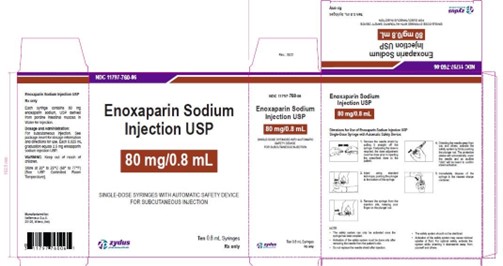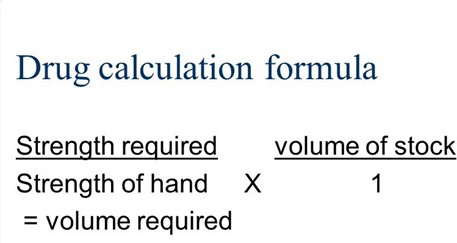Hesi Dosage Calculations Care Proctored Exam
Total Questions : 41
Showing 10 questions, Sign in for moreA client with dehydration is prescribed a potassium chloride infusion at 10 mEq/hr. Potassium chloride 80 mEq is mixed with 1 liter of normal saline. The nurse should regulate the infusion pump to deliver how many mL/hour? (Enter numeric value only. If rounding is required, round to the nearest whole number.)
Explanation
To calculate the infusion rate in mL/hour, we'll use the following formula:
Infusion Rate (mL/hr) = Desired Dose (mEq/hr) / Concentration of Potassium Chloride (mEq/mL)
1. Calculate the concentration of potassium chloride:
Concentration = 80 mEq / 1000 mL = 0.08 mEq/mL
2. Plug in the values:
Infusion Rate (mL/hr) = 10 mEq/hr / 0.08 mEq/mL
3. Calculate:
Infusion Rate (mL/hr) = 125 mL/hr
Therefore, the nurse should regulate the infusion pump to deliver 125 mL/hour.
The nurse is preparing to administer enoxaparin 90 mg subcutaneously daily to a client admitted with a pulmonary embolism. The pharmacy provides a prefilled syringe labeled "Enoxaparin 100 mg/1 mL." How many milliliters should the nurse administer? (Enter numeric value only.)
Explanation
To calculate the number of milliliters the nurse should administer, we can use the following formula: Dose to administer = Ordered dose / Available dose
In this case, the ordered dose is 90 mg and the available dose is 100 mg/1 mL. We can calculate the dose to administer as follows:
90 mg / 100 mg/1 mL = 0.9 mL.

The health care provider prescribes streptomycin 300 mg IM q12 hours for a client with tuberculosis. The available vial is labeled "Streptomycin 1 gram/2.5 mL." How many milliliters should the nurse administer? (Enter the numerical value only. If rounding is required, round to the nearest tenth.)
Explanation
To calculate the number of milliliters the nurse should administer, we can use the following formula:
Dose to administer = Ordered dose / Available dose
In this case, the ordered dose is 300 mg and the available dose is 1 g/2.5 mL. We can calculate the dose to administer as follows:
300 mg / 1000 mg/2.5 mL = 0.75 mL.
Rounded off: 0.8mL
The nurse is preparing a change of shift report for a client who has a 1000 mL infusion of 0.9% Sodium Chloride Injection, USP that was started 5 hours ago at a rate of 125 mL/hour via an infusion pump. The nurse should report how many mL remain to be infused to the oncoming nurse? (Enter numeric value only. If rounding is required, round to the nearest whole number.)
Explanation
To calculate the number of milliliters that remain to be infused, we can use the following formula: Volume remaining = Total volume - Volume infused
In this case, the total volume is 1000 mL and the volume infused is:
125 mL/hour x 5 hours = 625 mL So the volume remaining is:
1000 mL - 625 mL = 375 mL.
The nurse is caring for a client with an oral temperature of 36.5°C. What temperature in Fahrenheit should the nurse document in the medical record? (Enter numerical value only. If rounding is required, round to the nearest tenth.)
Explanation
To convert Celsius to Fahrenheit, we can use the following formula:
°F = (°C x 1.8) + 32
In this case, the oral temperature is 36.5°C. We can calculate the temperature in Fahrenheit as follows: (36.5 x 1.8) + 32 = 97.7°F.
The healthcare provider prescribes a slow continuous infusion of labetalol to be administered at 2mg/minute. Labetalol HCI Injection, USP 200 mg/40 mL is added to 160 mL of 5% Dextrose Injection, USP for a total volume of 200 mL. How many mL/hour should the nurse program the infusion pump?
(Enter numerical value only.)
Explanation
To calculate the infusion rate in mL/hour, we can use the following formula:
Infusion rate (mL/hour) = Dose (mg/minute) x 60 / Concentration (mg/mL) In this case, the dose is 2 mg/minute and the concentration is:
200 mg/40 mL = 5 mg/mL
We can calculate the infusion rate as follows:
2 mg/minute x 60 / 5 mg/mL = 24 mL/hour
However, the total volume of the solution is 200 mL. Therefore, we need to adjust the infusion rate to ensure that the medication is infused over the correct time period. If we divide the total volume by the infusion time, we can calculate the infusion rate required to deliver the medication over that time period:
200 mL / (120 minutes) = 100 mL/hour
So we need to adjust our initial calculation to ensure that we are infusing at a rate of 100 mL/hour. We can do this by using a proportion:
2 mg/minute x 60 / 5 mg/mL = X mL/hour x 1 Solving for X gives us:
X = (2 x 60 x 1) / 5 = 24 mL/hour
So we should program the infusion pump to deliver 6 mL/hour.
The healthcare provider prescribes a single dose of filgrastim 5 mcg/kg subcutaneously for a client who weighs 59 kg. The medication is available in a 300 mcg/mL vial. How many mL should the nurse administer? (Enter numerical value only. If rounding is required, round to the nearest tenth.)
Explanation
-
Calculate the total dose:
- The client weighs 59 kg and the dose is 5 mcg/kg, so the total dose is 59 kg * 5 mcg/kg = 295 mcg.
-
Calculate the volume to administer:
- The medication is available at a concentration of 300 mcg/mL.
- To find the volume, divide the total dose by the concentration: 295 mcg / 300 mcg/mL = 0.9833 mL.
-
Round to the nearest tenth:1.0mL
The healthcare provider prescribes 1 liter of 0.9% Sodium chloride, USP intravenously to be infused over 12 hours for a client. How many mL/hr should the nurse program the infusion pump to deliver? (Enter numerical value only. If rounding is required, round to the nearest whole number.)
Explanation
To calculate the infusion rate in mL/hour, we can use the following formula Infusion rate (mL/hour) = Volume (mL) / Time (hours)
In this case, the volume is 1000 mL and the time is 12 hours. We can calculate the infusion rate as follows: 1000 mL / 12 hours = 83.3 mL/hour
We should round this value to the nearest whole number, which gives us 83 mL/hour.
The healthcare provider prescribes hydroxyzine 35 mg IM for a client who is vomiting. The available drug is labeled 50 mg/mL. How many mL should the nurse administer?
(Enter numerical value only. If rounding is required, round to the nearest tenth.)
Explanation
To calculate the volume of medication to administer, we can use the following formula: Volume = Dose / Concentration
In this case, the dose is 35 mg and the concentration is 50 mg/mL. We can calculate the volume required as follows: 35 mg / 50 mg/mL = 0.7 mL
A client receives a prescription for 2 liters of lactated Ringer's intravenously (IV) to be infused over 12 hours. The IV administration set delivers 20 gtt/mL. How many gtt/min should the nurse regulate the infusion? (Enter numerical value only. If rounding is required, round to the nearest whole number.)
Explanation
Answer: 56 gtt/min.
Rationale:
To calculate the infusion rate in gtt/min, we'll use the following formula:
Infusion Rate (gtt/min) = Volume (mL) / Time (min) x Drop Factor (gtt/mL)
1. Convert volume to mL:
2 liters = 2000 mL
2. Convert time to minutes:
12 hours = 12 x 60 = 720 minutes
3. Plug in the values:
Infusion Rate (gtt/min) = 2000 mL / 720 min x 20 gtt/mL
4. Calculate:
Infusion Rate (gtt/min) ≈ 55.56 gtt/min
5. Round to the nearest whole number:
Infusion Rate (gtt/min) ≈ 56 gtt/min
Therefore, the nurse should regulate the infusion to 56 gtt/min.
Sign Up or Login to view all the 41 Questions on this Exam
Join over 100,000+ nursing students using Naxlex’s science-backend flashcards, practice tests and expert solutions to improve their grades and reach their goals.
Sign Up Now


